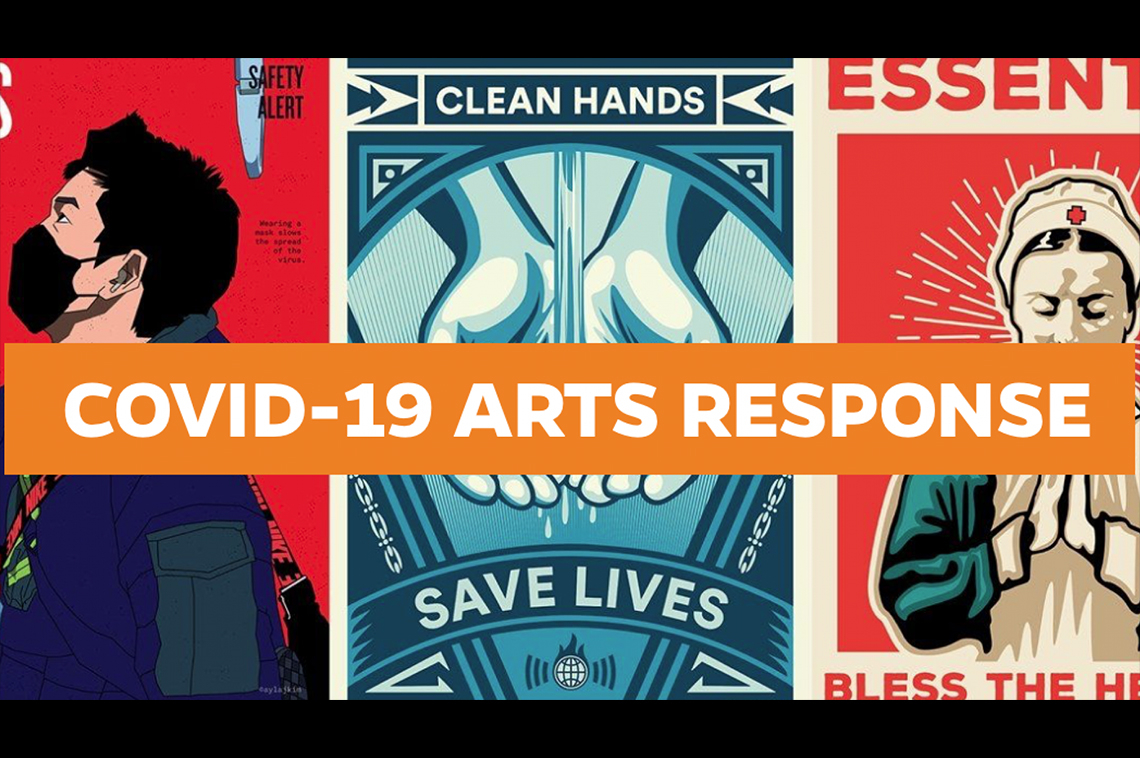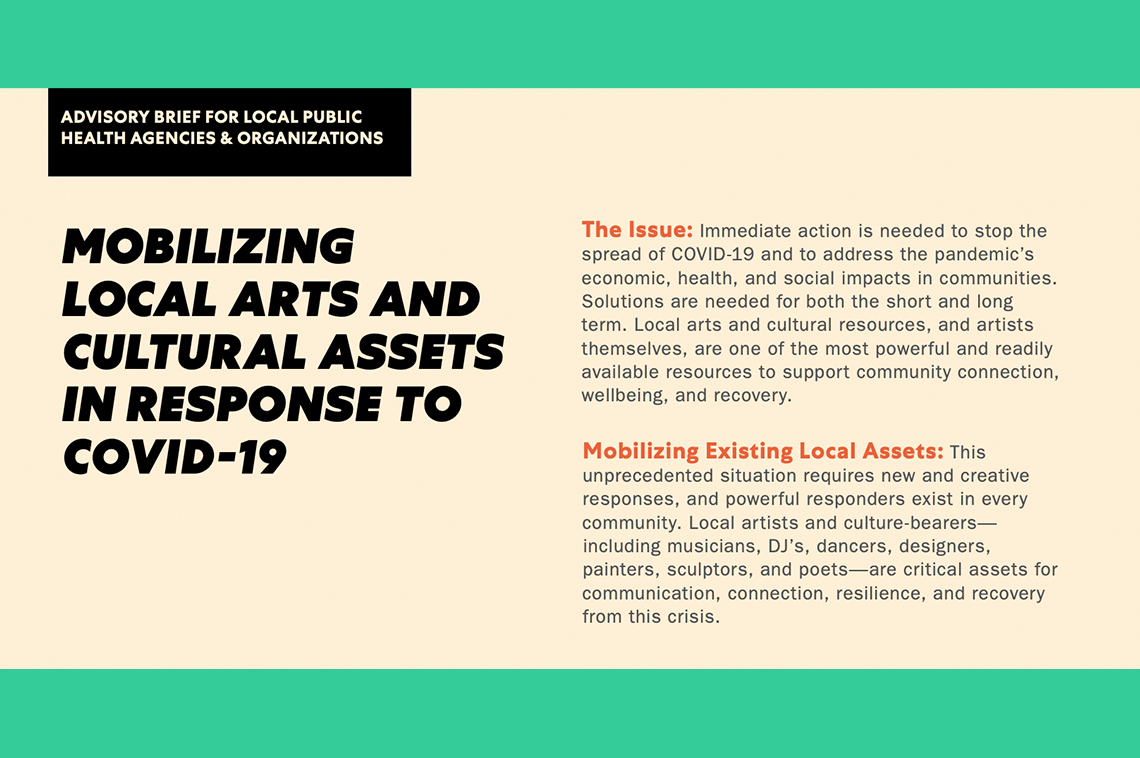

The arts are having a moment. Artists and arts organizations are among the most financially vulnerable during the unprecedented dual crises that we are currently living through, but have you noticed the explosion of art in our national and international consciousness?
From D-Nice’s Club Quarantine to Social Distance Powwows, from Amplifier’s Global Call for Art and Mark Strandquist's Fill the Walls With Hope to Mo Willems’ Lunch Doodles, from #quarantinecreation to #theviewfromhere... singing, dancing, drawing, crafting, and more are supporting us through this previously unfathomable experience – whether we are pop stars like Alicia Keys or a group of neighbors in the Bay Area, whether we are processing complicated emotions or simply trying to pass the time.
“People turn to the arts in challenging times because they help us to heal, to share stories, to make meaning, and to drive collective action and social change.” So begins the Call for Collaboration: Mobilizing the Arts for Covid-19 Communication and Coping released last month by ArtPlace’s research partners at the University of Florida Center for Arts in Medicine (CAM). It is one of several resources that Jill Sonke, who leads the Center, has mobilized to create since the COVID-19 crisis began this Spring.
CAM has built an incredibly broad and diverse coalition of individuals and organizations at the intersection of arts, community development, and public health over the last two years as part of our Creating Healthy Communities initiative. So while many of ArtPlace’s partners and peer organizations are working tirelessly to build critical support for the arts sector during the COVID-19 crisis, Jill recognized that the Creating Healthy Communities network was uniquely positioned to lead a slightly different but equally important conversation – one centered around the role that the arts sector was playing in the COVID-19 response.
Artists and arts organizations are stepping up to lead individual and community care work all across the country, and will undoubtedly be on the front lines of reimagining new, equitable structures and systems so desperately needed as we move from relief to recovery. What better moment to consolidate the examples and combine them with the evidence-based research that CAM already has underway?
Over the past six weeks, CAM has worked with dozens of collaborators and partners to develop a growing suite of frameworks, resources, and opportunities for incorporating the arts into COVID-19 response and recovery efforts:
Advisory Briefs
Building on the Call for Collaboration mentioned above, several authors and external reviewers are working to create advisory briefs geared to public health and government agencies at both the local and state level. These documents are two-page primers that – at a glance – bring together key concepts, messaging, real-time examples, and peer reviewed evidence for ways that the arts can help during the COVID-19 pandemic.
The Local Governmental Advisory Brief was released in collaboration with the National Network of Public Health Institutes (NNPHI), and the COVID-19 Arts Response State Governmental Advisory Brief, intended for governor’s offices and state agencies including public health, education, mental health, community and economic development, aging, human, social and family services, and disability services, was released in partnership with the National Association of States Arts Agencies (NASAA) and the National Alliance of Community Economic Development Associations (NACEDA).
Resource Repository
As a means to capture the growing number of project examples, media coverage, and organizations leading arts-based COVID-19 response work, CAM quickly adapted a research database originally built for the Creating Healthy Communities effort to accommodate new, open-sourced entries. The repository is modeled off of one that Jill and her team created when they researched the role of arts in health communication around the Ebola crisis in 2014-2015, and the new site allows anyone to submit their own work and search for inspiration, ideas, partners, and more. Mark Strandquist's work on his project Fill the Walls With Hope kindly provided the art for the Resource Repository
Evidence Based Framework for Arts in Public Health
At the core of all the materials being released is the Evidence Based Framework for Arts in Public Health. Developed after two years of scoping and systematic reviews, this framework consolidates the available data around how the arts impact public health outcomes and provides key citations for the advisory briefs and more. For the public health community in particular, it is critical to share solid research and evidence that backs up what we may know intuitively, and what we are seeing organically all across the country: that local arts and cultural resources, and artists themselves, are one of the most powerful and readily available assets to support communication, connection, resilience, and recovery during the COVID-19 crisis and beyond.
***
The Center for Arts in Medicine is leading several additional efforts, including a national observational study on the mental health impacts of the social distancing, and a series of working groups focused on specific stakeholders impacted by the COVID-19 crisis (healthcare workers, older populations, performing artists, people with disabilities, those without access to technology, and more). To learn more:
- Visit the University of Florida’s COVID-19 Arts Response website
- Join the Creating Healthy Communities: Arts + Public Health in America Network
- Email Keely Mason (kmason [at] arts.ufl.edu (kmason (at) arts.ufl.edu)) if you would like to participate or engage with any of the ongoing working groups
- Browse or submit your work to the COVID-19 Arts Response Resource Repository





